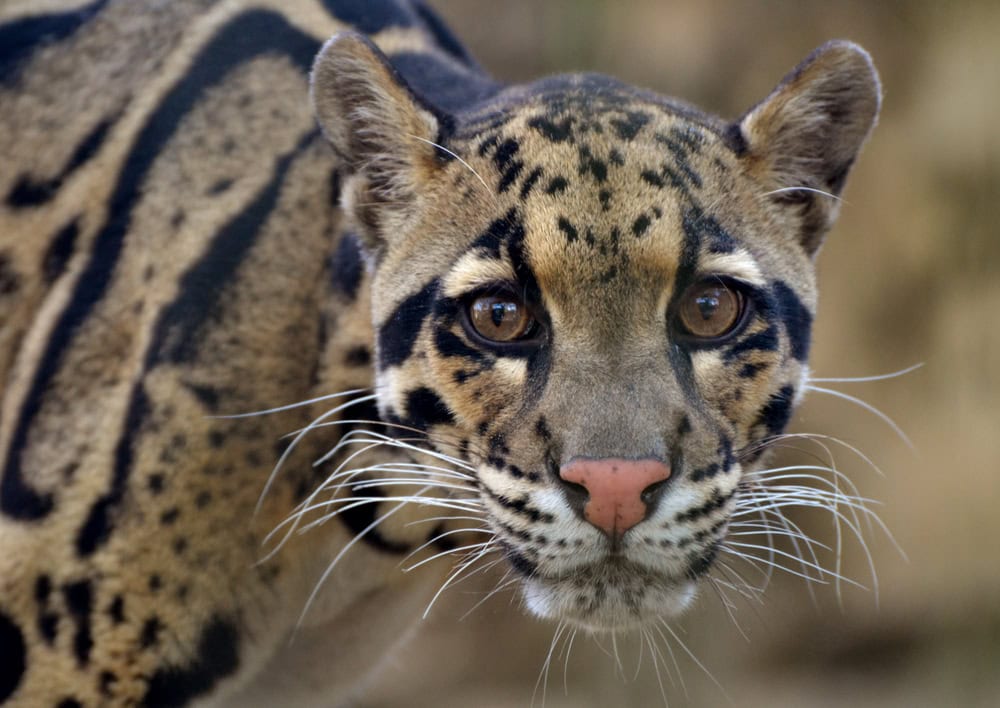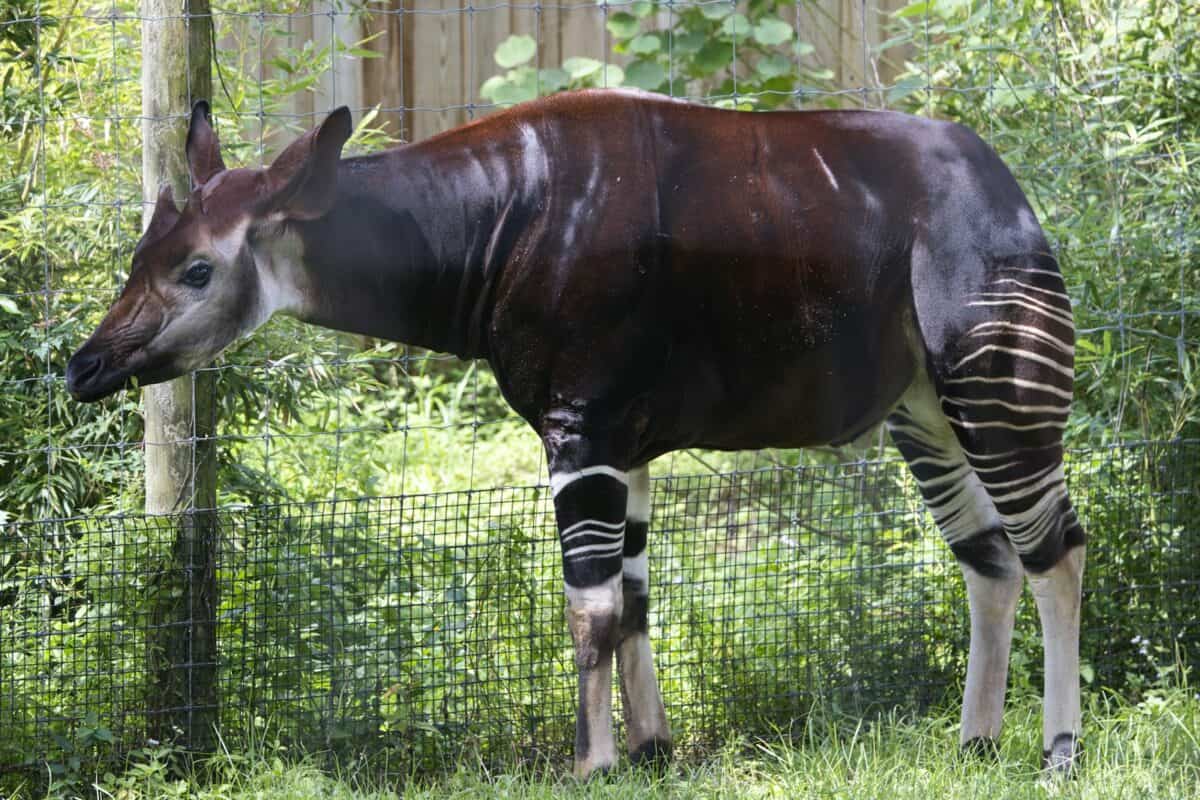Forests cover about 31% of the world’s land surface, housing an incredible diversity of wildlife. Yet, many forest inhabitants remain elusive, rarely glimpsed by human eyes despite our technological advances and increased presence in natural areas. These secretive creatures have evolved remarkable adaptations that make them masters of camouflage, nocturnal specialists, or inhabitants of remote, difficult-to-access regions. From the mysterious clouded leopard to the nearly mythical olm, these 12 forest dwellers represent some of nature’s greatest hide-and-seek champions. Their elusiveness contributes to both their mystique and, in many cases, their survival in a world of shrinking habitats. Let’s explore these remarkable animals that continue to evade even the most dedicated wildlife enthusiasts.
The Ghost of the Forest Clouded Leopard

The clouded leopard (Neofelis nebulosa) earns its nickname “ghost of the forest” through its remarkable ability to vanish into Southeast Asian forests. With its distinctive cloud-like markings and exceptionally long canine teeth proportionate to its skull size—the longest of any modern cat—this medium-sized wild cat remains one of the least studied felines. Researchers attempting to study clouded leopards often come up empty-handed even after months of fieldwork with camera traps. Their exceptional climbing abilities allow them to move through canopies with ease, hunting prey both in trees and on the ground.
What makes clouded leopards particularly difficult to spot is their combination of nocturnal habits, superb camouflage, and preference for dense forest habitats. They can descend trees headfirst like squirrels and hang from branches using their powerful tails and paws—behaviors that keep them hidden from ground-based observers. Conservation efforts for these magnificent cats are complicated by their elusiveness, as scientists struggle to establish accurate population estimates across their fragmented range in countries like Thailand, Nepal, and Malaysia.
The Enigmatic Okapi

Despite its striking appearance—with zebra-striped hindquarters and a giraffe-like head—the okapi (Okapia johnstoni) remained unknown to Western science until 1901. Native to the dense, remote rainforests of the Democratic Republic of Congo, this relative of the giraffe evaded scientific discovery thanks to its secretive nature and remote habitat. Local indigenous people knew of the animal’s existence long before scientists confirmed it, but the okapi’s exceptional evasiveness delayed its official documentation.
Okapis possess several adaptations that enhance their stealth. Their unique coloration provides perfect camouflage in dappled forest light, while specialized oil-secreting glands produce a sticky, tar-like substance that masks their scent from predators. They have extremely keen hearing, with independently mobile ears that can rotate to detect sounds from multiple directions simultaneously. Even today, seeing an okapi in the wild remains exceedingly rare, with most people encountering them only through zoo conservation programs. Researchers estimate fewer than 10,000 okapis remain in the wild, and their population continues to decline due to habitat loss and poaching.
The Secretive Saola

Often called the “Asian unicorn,” the saola (Pseudoryx nghetinhensis) may be the rarest large mammal on Earth. First discovered in 1992 in the Annamite Mountains bordering Vietnam and Laos, this elusive bovine has been documented in the wild by scientists only a handful of times. No Western scientist has ever observed a living saola in the wild, and camera traps capture them so rarely that each new photograph becomes international news in conservation circles.
The saola’s rarity stems from both its naturally low population density and its remarkable ability to avoid detection. Unlike many forest animals, saolas don’t create well-defined paths through the forest, making tracking nearly impossible. They have distinctive white facial markings and two parallel horns that can reach 20 inches in length, yet they manage to remain virtually invisible in their dense forest habitat. Conservation efforts face tremendous challenges, as scientists can’t protect what they can’t find or count. Current estimates suggest fewer than 100 individuals may remain, making the saola among the most critically endangered forest dwellers on our planet.
The Shadow-Dwelling Olm

The olm (Proteus anguinus) represents one of the most unusual forest-adjacent creatures on our list—a permanently aquatic, cave-dwelling salamander that inhabits the underground rivers and streams beneath the forested karst regions of the Dinaric Alps. These remarkable amphibians have evolved for a life spent entirely in darkness, developing extraordinary adaptations that make them nearly impossible to observe in their natural habitat without specialized equipment and caving expertise.
Often called “human fish” due to their pinkish, flesh-colored skin, olms have abandoned pigmentation in their lightless environment. They’ve developed an array of sensory adaptations to compensate for their vestigial, non-functional eyes, including extremely sensitive hearing, an acute sense of smell, and the ability to detect electrical fields. Perhaps most remarkable is their incredible longevity and slow metabolism—olms can live up to 100 years and survive without food for up to a decade. Their reproductive cycle remains mysterious, with females laying eggs only once every six or seven years. Despite being known to science since the 1700s, many aspects of olm biology and behavior remain poorly understood due to the extreme difficulty of studying them in their natural underground forest habitat.
The Phantom Cat Bay Cat

The Bornean bay cat (Catopuma badia) stands as one of the world’s most mysterious and least-observed wild cats. Endemic to the island of Borneo, this medium-sized feline has evaded scientific study so effectively that until 1992, it was known only from museum specimens. Even today, with modern tracking technology, researchers rarely glimpse this elusive cat. With fewer than 2,500 mature individuals estimated to exist in the wild, the bay cat represents one of the most endangered yet least-studied cats on Earth.
The bay cat’s reddish-brown or gray coat provides excellent camouflage in the dense Bornean rainforests it calls home. Unlike many cat species that have been extensively studied, scientists know almost nothing about the bay cat’s hunting behavior, reproduction, or social structure. What little information exists comes primarily from camera trap studies that may run for years before capturing a single image. This extreme elusiveness, combined with ongoing deforestation in Borneo—which has lost over 30% of its forest cover in recent decades—places the bay cat in a precarious position. Its ability to remain hidden, once an evolutionary advantage, now complicates conservation efforts aimed at protecting this phantom of the forest.
The Vanishing Giant Forest Elephant

It might seem counterintuitive that an animal weighing up to five tons could be difficult to find, but the African forest elephant (Loxodonta cyclotis) has mastered the art of invisibility in Central Africa’s dense rainforests. Only recognized as a distinct species from the savanna elephant in 2010, these forest giants move with surprising stealth through thick vegetation. Despite their size, forest elephants can disappear from view in seconds, their dark gray skin blending perfectly with the shadowy forest interior.
Forest elephants have evolved to be smaller than their savanna cousins, with straighter tusks and more rounded ears that facilitate movement through dense vegetation. They create and maintain forest clearings known as “bais,” yet researchers frequently struggle to locate and count them accurately due to the challenging terrain and the elephants’ tendency to avoid human presence. Their population has declined by more than 86% over the past 31 years, primarily due to ivory poaching and habitat fragmentation. Their elusiveness initially masked this catastrophic decline, with scientists unable to accurately gauge population losses until recent advances in DNA analysis of dung samples and acoustic monitoring revealed the extent of the crisis.
The Illusionist Uroplatus Geckos

Madagascar’s leaf-tailed geckos of the genus Uroplatus represent nature’s master illusionists. These remarkable reptiles have evolved camouflage so perfect that even trained herpetologists often walk right past them during forest surveys. The most famous species, the satanic leaf-tailed gecko (Uroplatus phantasticus), mimics dead leaves complete with apparent decay, notches, and veins. Their flattened bodies, skin flaps, and remarkably detailed patterning allow them to virtually disappear against tree bark or among leaf litter.
What makes these geckos particularly difficult to find is their ability to adjust their coloration to match their surroundings, combined with behavioral adaptations that enhance their disguise. They press their bodies flat against surfaces, eliminating shadows that might give away their position. If threatened, some species will flash a bright red mouth and emit a defensive call—but only as a last resort when their primary defense of invisibility has failed. Scientists continue to discover new Uroplatus species, with at least 19 now described, suggesting that even more of these masters of disguise may await discovery in Madagascar’s rapidly diminishing forests. Unfortunately, deforestation threatens many species in this genus, with several classified as endangered or vulnerable.
The Forest Phantom Giant Armadillo

The giant armadillo (Priodontes maximus) roams the forests of South America as a living fossil, yet remains one of the continent’s least-studied large mammals. Growing up to 5 feet long and weighing up to 110 pounds, this nocturnal beast leaves behind distinctive burrows and claw marks but rarely shows itself. Their population density is incredibly low—researchers estimate less than one individual per square kilometer even in optimal habitat—making encounters exceptionally rare despite their considerable size.
Several factors contribute to the giant armadillo’s phantom-like existence. Unlike smaller armadillo species, giants are strictly nocturnal, emerging from their burrows only under the cover of darkness. They possess remarkable digging abilities, creating complex tunnel systems up to 16 feet deep where they spend daylight hours completely hidden from view. Each individual maintains multiple burrows across a territory that may span over 1,000 hectares, allowing them to avoid using the same shelter consecutively and further reducing detection probability. Additionally, they travel significant distances each night, sometimes covering over 3 kilometers while foraging, which spreads their already minimal signs of presence across vast areas. Despite being the largest armadillo species and having existed for millions of years, their biology, behavior, and exact conservation status remain poorly understood due to the extreme challenge of studying such an elusive creature.
The Woodland Spirit Pine Marten

The European pine marten (Martes martes) embodies the spirit of old-growth forests across Europe, yet remains one of the continent’s most difficult mammals to observe in the wild. These agile members of the weasel family possess an almost supernatural ability to detect human presence, often disappearing long before hikers realize they were ever there. With chestnut-brown fur, a cream-colored throat patch, and a long, bushy tail, pine martens are strikingly beautiful—when they can actually be seen.
Pine martens combine several traits that enhance their elusiveness. Their primarily nocturnal and crepuscular activity patterns mean they’re most active when humans are least likely to be in the forest. They possess exceptional climbing abilities, moving through the canopy with squirrel-like agility where most observers never think to look. Their acute senses, particularly their hearing and smell, allow them to detect potential threats from considerable distances. In the UK, where they were nearly exterminated by the early 20th century, pine martens are making a gradual comeback, yet many wildlife enthusiasts spend years searching for them without success. Even in areas with healthy populations, researchers often must rely on indirect evidence such as scat, footprints, or hair samples collected from specialized traps rather than direct observations to study these woodland ghosts.
The Mountain Spirit Snow Leopard

The snow leopard (Panthera uncia) represents the ultimate challenge for wildlife observers, earning its nickname “ghost of the mountains” through its remarkable ability to vanish into seemingly barren, rocky landscapes at the forest edge. Native to the high-altitude forests and alpine zones of Central Asia’s mountain ranges, these magnificent cats move like spirits through some of the most inhospitable terrain on Earth. Their pale gray fur patterned with dark rosettes provides perfect camouflage against snow-dusted rocks and broken forest shadows.
What makes snow leopards particularly difficult to spot goes beyond their exceptional camouflage. They inhabit remote, rugged landscapes at elevations between 3,000-4,500 meters, where oxygen is scarce and temperatures regularly plummet below freezing. Their territories span vast areas—a single male may patrol over 200 square kilometers—resulting in extremely low population densities. They possess specialized adaptations for their environment, including extra-large paws that function like natural snowshoes and unusually long tails for balance when navigating precarious terrain. These adaptations make them masters of their harsh domain but also create immense challenges for researchers. Before camera trap technology, some biologists devoted entire careers to studying snow leopards without ever directly observing their subjects in the wild. Even today, with advanced technology, the International Union for Conservation of Nature estimates that only 2,710-3,386 mature snow leopards remain across 12 countries—each individual a ghost-like guardian of the high mountain forests and alpine zones.
The Jungle Wraith Black Panther

The black panther—typically a melanistic leopard (Panthera pardus) or jaguar (Panthera onca)—represents one of the most mythologized forest dwellers, its midnight-black form slipping through shadows like a living piece of darkness. These big cats aren’t separate species but rather color variants that occur when a dominant gene triggers excess melanin production. In Asian forests, black leopards can constitute up to 40% of the leopard population in some regions, while black jaguars remain considerably rarer in the Americas, representing less than 6% of the population.
What makes black panthers particularly elusive is how their coloration enhances their natural stealth. Their dark coats absorb more light than typically-patterned leopards or jaguars, allowing them to disappear completely in the dappled shadows of forests, especially during dawn and dusk when they primarily hunt. Despite popular mythology, black panthers still possess the same rosette patterns as their normally-colored counterparts—these patterns are simply hidden by excess black pigment, though sometimes visible in certain lighting conditions. In Malaysia’s dense rainforests, researchers have documented black leopards that are effectively invisible to camera traps using standard flash photography, requiring special infrared equipment to detect them. This natural advantage in concealment, combined with the inherent elusiveness of all big cats, makes encountering a black panther in the wild one of the rarest and most memorable wildlife experiences possible—one that few people outside of dedicated research teams ever experience.
The Forest Siren Ivory-billed Woodpecker

The ivory-billed woodpecker (Campephilus principalis) has transformed from a magnificent resident of old-growth bottomland forests into what many consider a ghost or phantom bird. Once found throughout the southeastern United States and Cuba, this spectacular woodpecker with its 20-inch length and 30-inch wingspan was the third-largest woodpecker in the world. Its distinctive ivory-colored bill and dramatic black-and-white plumage made it unmistakable—when it could be found. After decades presumed extinct, possible sightings in 2004 in Arkansas sparked intensive searches, but definitive proof of surviving populations remains elusive.
Several factors contributed to the ivory-bill’s legendary elusiveness even before its population collapsed. Unlike many woodpeckers that inhabit forest edges, ivory-bills required vast tracts of mature forest with abundant dead and dying trees for feeding and nesting. They maintained large home ranges and were naturally wary of human presence, often departing areas silently upon detecting observers. Their calls and distinctive double-knock drumming pattern could be confused with the similar-looking but smaller pileated woodpecker by inexperienced observers. The ivory-bill’s current status represents one of ornithology’s most enduring mysteries—despite numerous expeditions using advanced recording equipment, camera traps, and drone technology, conclusive evidence of surviving ivory-bills remains frustratingly out of reach. In 2021, the U.S. Fish and Wildlife Service proposed declaring the species extinct, yet some researchers and birdwatchers maintain hope that small populations might persist in remote forest pockets across their former range.
Conclusion:

The world’s forests harbor a hidden realm of extraordinary creatures, many of which remain tantalizingly out of reach despite centuries of exploration and scientific advancement. From the clouded leopard’s arboreal acrobatics to the saola’s near-mythical obscurity, these elusive animals remind us that nature still holds mysteries we have yet to unravel. Their rarity and secrecy often serve as both protection and peril—shielding them from immediate human harm but complicating conservation efforts in an era of rapid habitat destruction. As forest habitats continue to shrink and fragment, safeguarding these secretive species becomes increasingly urgent. Recognizing their existence is just the beginning; preserving the wild, undisturbed environments they depend on is the key to ensuring that future generations may one day witness these ghostly inhabitants not just in myth or fleeting photographs, but thriving in the wild places they call home.
- 10 Common Animal Myths That You Need to Stop Believing - August 11, 2025
- The Secret Diet of the Worlds Largest Snake and How It Swallows Prey Whole - August 11, 2025
- 13 Creatures That Grieve Their Dead - August 11, 2025

